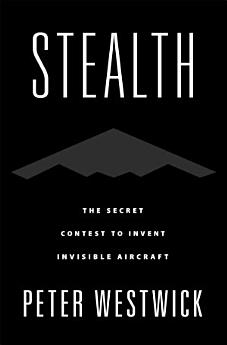Stealth: The Secret Contest to Invent Invisible Aircraft
Dec 2019 · Oxford University Press
3.7star
3 reviewsreport
Ebook
336
Pages
family_home
Eligible
info
reportRatings and reviews aren’t verified Learn More
shoppingmode40% price drop on Jul 29
About this ebook
On a moonless night in January 1991, a dozen U.S. aircraft appeared in the skies over Baghdad. To the Iraqi air defenses, the planes seemed to come from nowhere. Their angular shape, making them look like flying origami, rendered them virtually undetectable. Each aircraft was more than 60 feet in length and with a wingspan of 40 feet, yet its radar footprint was the size of a ball bearing. Here was the first extensive combat application of Stealth technology. And it was devastating. Peter Westwick's new book illuminates the story behind these aircraft, the F-117A, also known as the Stealth Fighter, and their close cousin the B-2, also known as the Stealth Bomber. The development of Stealth unfolded over decades. Radar has been in use since the 1930s and was essential to the Allies in World War Two, when American investment in radar exceeded that in the Manhattan Project. The atom bomb ended the war, conventional wisdom has it, but radar won it. That experience also raised a question: could a plane be developed that was invisible to radar? That question, and the seemingly impossible feat of physics and engineering behind it, took on increasing urgency during the Cold War, when the United States searched for a way both to defend its airspace and send a plane through Soviet skies undetected. Thus started the race for Stealth. At heart, Stealth is a tale of not just two aircraft but the two aerospace companies that made them, Lockheed and Northrop, guided by contrasting philosophies and outsized personalities. Beginning in the 1970s, the two firms entered into a fierce competition, one with high financial stakes and conducted at the highest levels of secrecy in the Cold War. They approached the problem of Stealth from different perspectives, one that pitted aeronautical designers against electrical engineers, those who relied on intuition against those who pursued computer algorithms. The two different approaches manifested in two very different solutions to Stealth, clearly evident in the aircraft themselves: the F-117 composed of flat facets, the B-2 of curves. For all their differences, Lockheed and Northrop were located twenty miles apart in the aerospace suburbs of Los Angeles, not far from Disneyland. This was no coincidence. The creative culture of postwar Southern California-unorthodox, ambitious, and future-oriented-played a key role in Stealth. Combining nail-biting narrative, incisive explanation of the science and technology involved, and indelible portraits of unforgettable characters, Stealth immerses readers in the story of an innovation with revolutionary implications for modern warfare.
Ratings and reviews
3.7
3 reviews
About the author
Peter Westwick is a research professor of history at the University of Southern California and director of the Aerospace History Project at the Huntington-USC Institute on California and the West. He is the author or editor of several books, including Into the Black: JPL and the American Space Program, 1976-2004, which won book prizes from the American Institute of Aeronautics and Astronautics and the American Astronautical Society.
Rate this ebook
Tell us what you think.
Reading information
Smartphones and tablets
Install the Google Play Books app for Android and iPad/iPhone. It syncs automatically with your account and allows you to read online or offline wherever you are.
Laptops and computers
You can listen to audiobooks purchased on Google Play using your computer's web browser.
eReaders and other devices
To read on e-ink devices like Kobo eReaders, you'll need to download a file and transfer it to your device. Follow the detailed Help Center instructions to transfer the files to supported eReaders.





